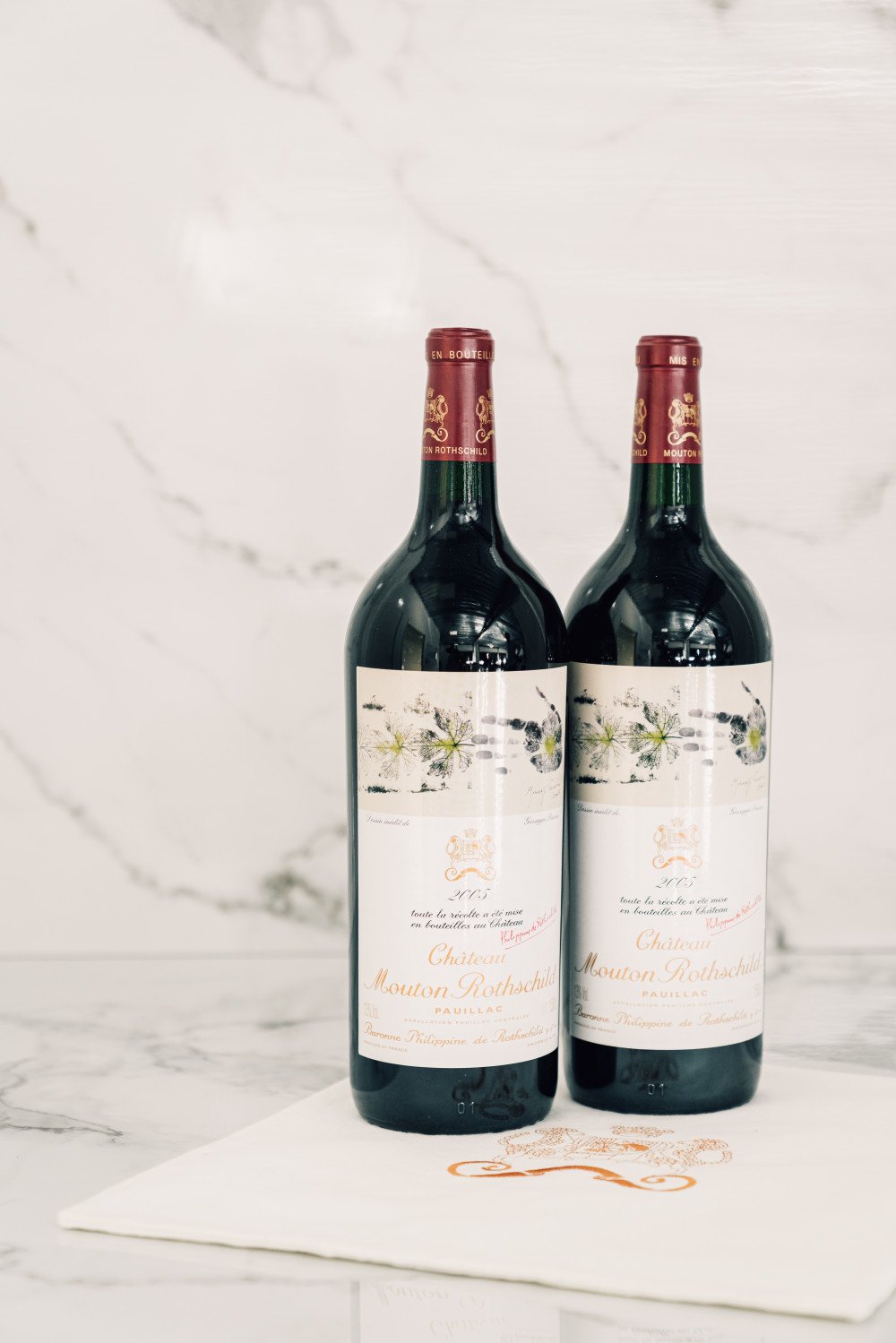Pauillac
Pauillac is an appellation in the Medoc region of Bordeaux. Mouton-Rothschild, Lafite Rothschild and, of course, Latour – hardly any other Bordeaux appellation can boast as many world-famous château names as Pauillac. And there's a good reason for that, because the wines are bursting with power, complexity and elegance.
The best wines from Pauillac
Pauillac is an appellation in the Medoc region of Bordeaux. Mouton-Rothschild, Lafite Rothschild and, of course, Latour – hardly any other Bordeaux appellation can boast as many world-famous château names as Pauillac. And there's a good reason for that, because the wines are bursting with power, complexity and elegance.
Cabernet Sauvignon is the main grape used to make its famous red wines. Merlot, Cabernet Franc and Petit Verdot are serving as supporting grape varieties.
Where exactly is the Pauillac appellation?
To discover Pauillac, we have to travel directly to the famous Left Bank of Bordeaux. Here, on the Médoc peninsula in south-western France, you will find the appellation with its 1,200 hectares of vineyards, about 48 kilometres north-west of Bordeaux. Pauillac borders Saint-Estèphe to the north and Saint-Julien-Beychevelle to the south, two other renowned wine-growing areas in the Médoc.
The Lafite and Latour manor houses were already shaping Pauillac in the Middle Ages. Latour even played a military role before the appellation developed into a prosperous capital of the Haut-Médoc through viticulture. The reason for this was the port, from which Pauillac wines were already being shipped around the world at that time. When large-scale viticulture began in the Médoc in the 18th century, Pauillac quickly became the hub for merchants and négociants in the region. This in turn led to more and more wineries being established in the appellation, whose wines were so good that Pauillac wines continue to amaze people all over the world to this day.
Which grapes are grown in Pauillac?
Although Pauillac is home to both red and white grape varieties, it is the red wines that have brought it worldwide fame. As is usual on the left bank of Bordeaux, Cabernet Sauvignon dominates here, usually flanked by Merlot, Cabernet Franc and Petit Verdot. Unlike Margaux, however, Pauillac also has smaller plantings of Malbec and Carmenère – a real rarity in Bordeaux!
On the white grape variety side, Pauillac is home to two main grapes: Sauvignon Blanc and Sémillon. As befits Bordeaux. The white wines may play only a minor role due to the charisma of the reds. But that doesn't change the fact that wines such as the ‘Aile d'Argent Blanc’ from Château Mouton-Rothschild are among the great Bordeaux flagships that should definitely be tried at least once.
Climate and soils in Pauillac
The vines thrive in Pauillac's temperate maritime climate. The Atlantic Ocean and the Gironde River undoubtedly have the greatest influence here. While cool breezes blow in from the Atlantic, preventing the grapes from scorching in the hot summer heat, the Gironde also balances out temperature peaks and minimises the risk of frost in spring. Summers are warm enough for optimal grape ripening, while cool nights help preserve acidity. The protection provided by forests mitigates the effects of strong Atlantic winds and contributes to the stability of the microclimate.
The soils in Pauillac are a decisive factor in the quality of the wines. They consist mainly of pebbles, limestone and gravel. This composition not only ensures excellent drainage, but also stores heat, which is released to the vines at night. This ensures that the grapes ripen evenly. The gravelly soil gives the wines their characteristic minerality and structure.
What does a Pauillac wine taste like?
This brings us to a very important question. What do Pauillac wines actually taste like? A typical Pauillac wine is powerful, complex and elegant at the same time. The wines are known for their deep aromas of blackcurrant, tobacco, cedar wood and graphite, as well as subtle notes of earth and spices. The tannins are robust and well-structured, giving the wines exceptional ageing potential. With increasing maturity, they develop a velvety texture and a harmonious balance between fruit, acidity and tannins.
Each château in Pauillac produces its own interpretation of the terroir. While some wines are more opulent and fruit-forward, others emphasise finesse and mineral nuances. This diversity makes Pauillac a fascinating appellation for explorers.
Famous Pauillac wine producers
There are 18 Grand Cru Classe wineries in Pauillac. This includes three First Growths, two Second Growths, one Fourth Growth and twelve Fifth Growths. With 54 producers overall, the area has solidified its standing as a centre of outstanding winemaking.
Wine producers
What food goes well with wines from Pauillac?
There is no question that grands vins from legendary châteaux such as Mouton-Rothschild, Latour or Lafite-Rotschild do not need to be accompanied by food. Enjoyed on their own, wine lovers can concentrate fully on their brilliance. However, a Premier Grand Cru Classé can also be served with a perfectly grilled steak or lamb chops, which emphasise the meaty notes of the Cabernet Sauvignon. In general, a slow-cooked beef stew is an ideal accompaniment to wines from Pauillac.
Roasted aubergines or a lentil cassoulet are also excellent pairings for these complex wines. Would you like to open a mature wine? Then why not serve it with a risotto with porcini mushrooms or a dish with truffles? The earthy notes go perfectly with the mature aromas of the wines! Have we whetted your appetite? Then don't miss out on Best of Wines' carefully curated selection of top wines from Pauillac.
Other regions



